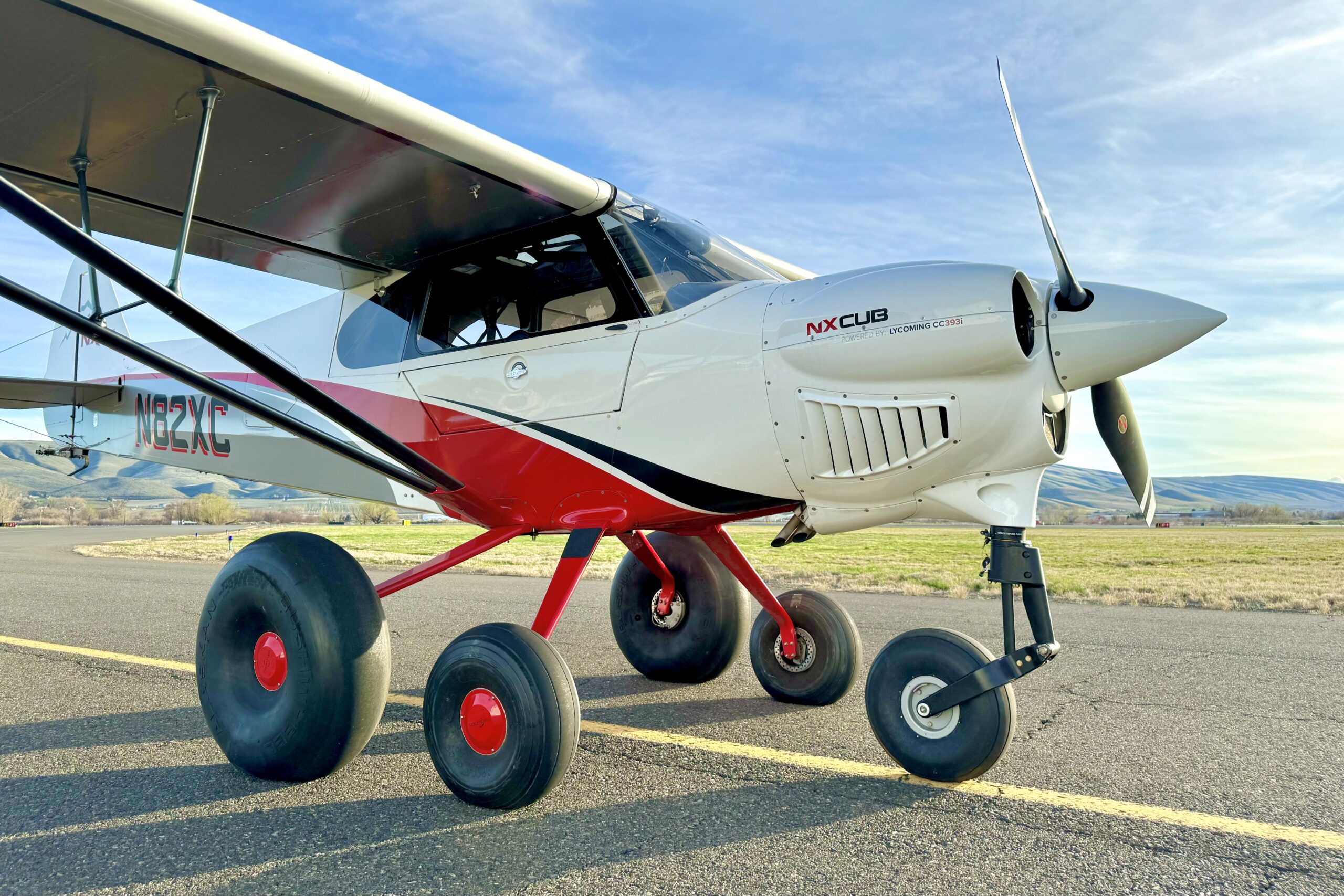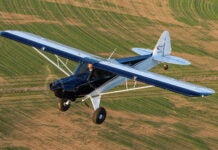 Development never seems to stop at CubCrafters‘ Yakima, Washington, HQ. Its latest offering seen here in prototype form on the NX Cub platform is called the Crab Cub—a wheely interesting take on tomorrow’s backcountry airplane.
Development never seems to stop at CubCrafters‘ Yakima, Washington, HQ. Its latest offering seen here in prototype form on the NX Cub platform is called the Crab Cub—a wheely interesting take on tomorrow’s backcountry airplane.
According to the company, “Recognizing recent industry-wide calls from regulators, insurance companies, and many in the pilot community to continue with safety innovation in the backcountry, the company sees broad applications for this new technology with flight training companies, various Government customers, and private aviators that just want a safer way to experience flying in remote areas.”
Patrick Horgan, CEO of CubCrafters explains, “Here at CubCrafters we are always thinking about safety, and this is the most robust landing gear configuration ever put on a Cub type aircraft. It is 4X as strong and has 4X the braking power of either conventional or tricycle landing gear. It tracks straight as an arrow; we really feel this is the one and only ground loop proof Cub for the ultimate in short landings.”
Will this new system be certified—or just certifiable? “The XCub is already Part 23 Certified in multiple different landing gear configurations including tailwheel, nosewheel, and as a floatplane,” says Horgan. “All we’re really doing here is melding our certified nosewheel and tailwheel landing gear into one configuration. With the FAA’s recent focus on a performance-based safety continuum doctrine, we believe they will see the simple brilliance in what we are doing and it should be a quick and easy certification process, maybe even completed by Oshkosh.”
“Some said that the original tricycle gear version of the XCub was so ugly it could never achieve commercial success,” said Brad Damm, the company’s Vice President, “but the NX cub has a fantastic sales record, so we’ve proven those naysayers wrong. Our feeling is that if tricycle gear was good, we think consumers will like this new quincycle landing gear even that much better. Big tundra tires are good off airport, but smaller traditional tires are better on pavement, this aircraft has the best of both worlds.”
When asked of the project was in any way funded by tire manufacturers, we received an inconclusive “no comment.”














The best Aplril fool ever 🤣
You forgot to put “April Fools!” at the end of the article.
I wouldn’t be surprised to see something like that for real. Once that crowd who buys oversized pickup trucks, with lift kits and huge tires that never leave the pavement, moved into airplanes, this is the kind of thing that appeals to them. They usually have little if no concept of aerodynamics. The FAA had to limit the size of tundra tries, as that crowd would just keep getting larger and larger sizes.
It’s got training wheels!
April Fools!!
Yeah – April fools indeed. It’s fugly, too! But the best part was the mention of ‘quick and easy certification’ – hahaha.